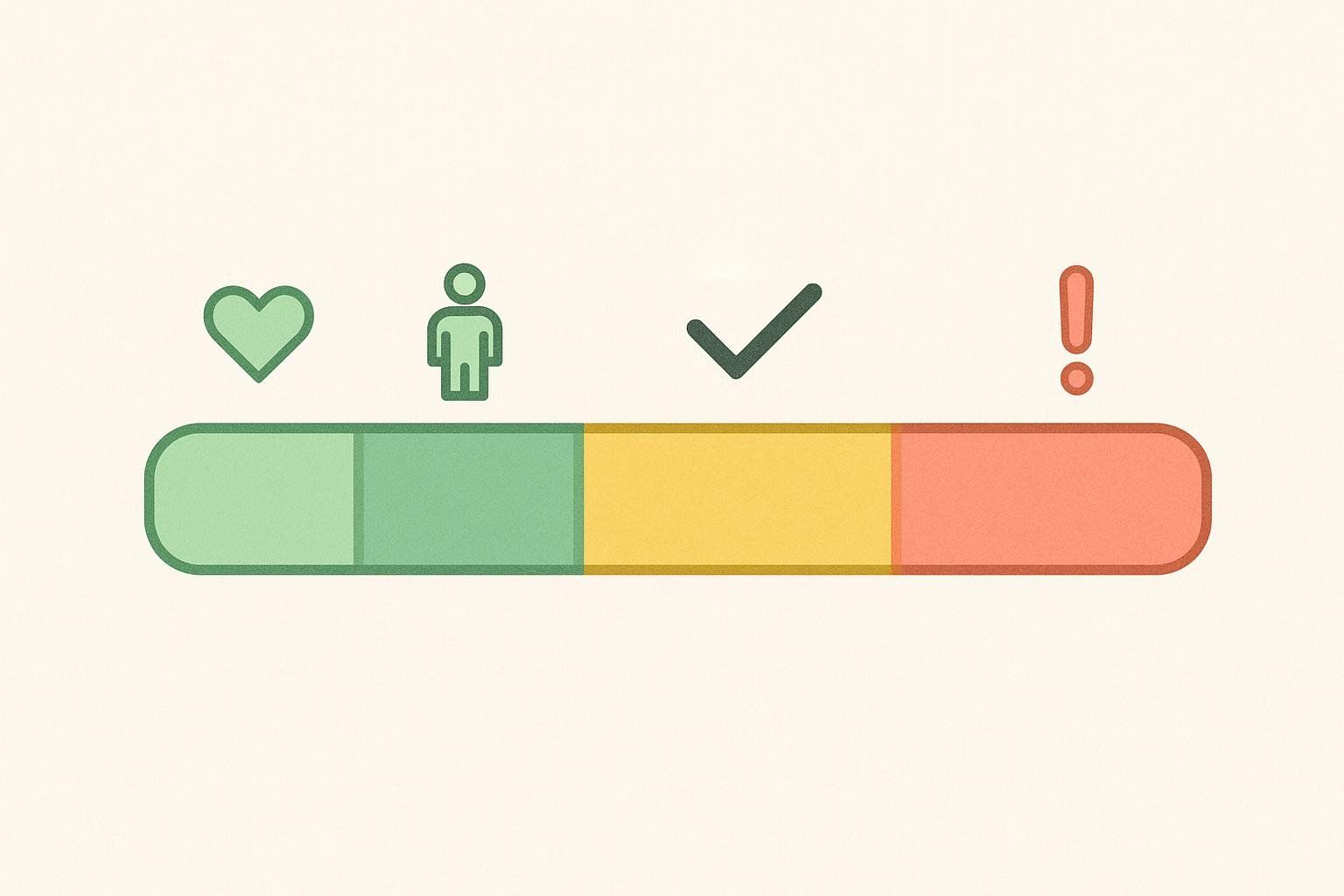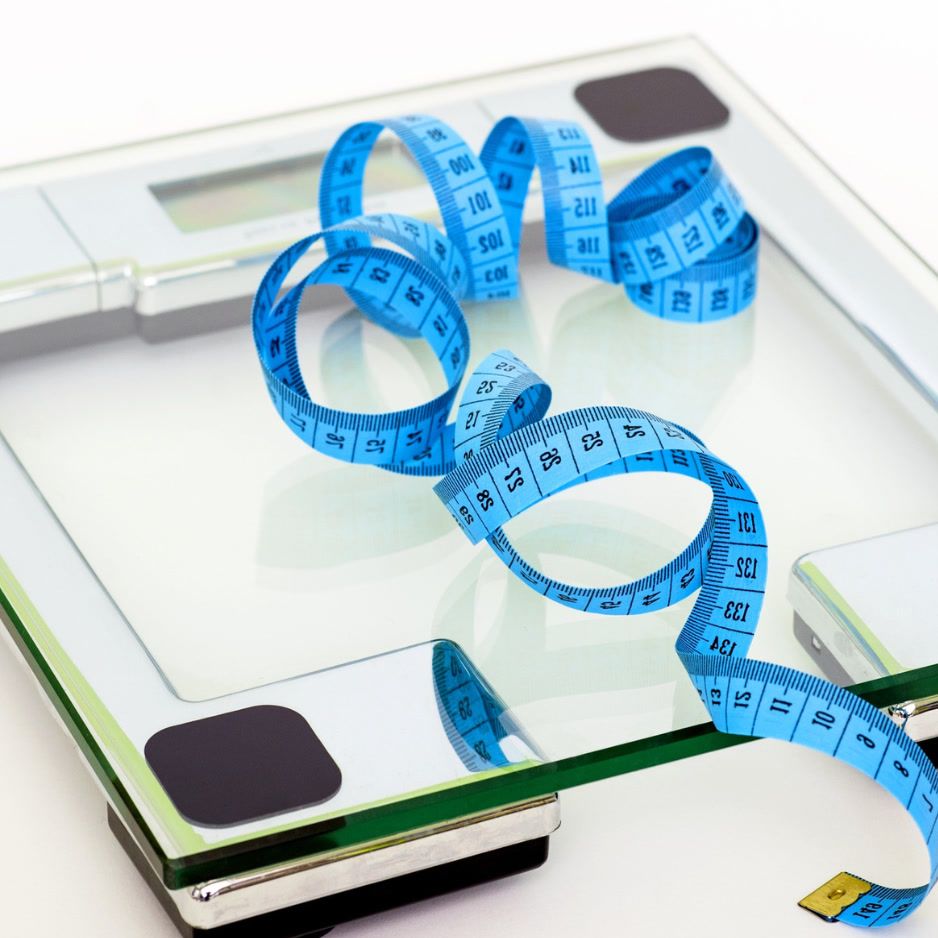Body Fat Percentage by Industry: BodySpec 2024 Insights

Body Fat Percentage by Industry: BodySpec 2024 Benchmark
Most body-fat charts split people by age and sex—but what you do from 9 to 5 matters, too. Factors common in many occupations—such as prolonged sedentary periods, irregular schedules, and workplace food environments—can significantly influence body composition.
To quantify those effects, BodySpec analyzed 12,487 U.S. adult DEXA scans completed in 2024. By matching each client’s corporate email domain to an employer, we built a dataset of body fat percentage by industry spanning nine major sectors.
DEXA provides a direct, high-precision measurement of fat, lean tissue, and bone, minimizing the assumptions other methods require. Read our explainer on how DEXA scans work and why they’re the gold standard.

What Counts as “Healthy” Body-Fat?
Before diving into industry-specific numbers, it helps to know the general benchmarks many health organizations use for adults 18–65.

| Category | Men | Women |
|---|---|---|
| Essential fat | 2–5 % | 10–13 % |
| Athletes | 6–13 % | 14–20 % |
| Fitness | 14–17 % | 21–24 % |
| Average | 18–24 % | 25–31 % |
| Obese (higher health risk) | >25 % | >32 % |
Adapted from the American Council on Exercise (ACE) body-fat guidelines.
Men generally carry 5–8 percentage points less body fat than women, according to ACE norms.
Our 2024 BodySpec dataset shows a comparable gap on average. However, we did not publish sex-specific means for each industry because several segments would fall under our 250-scan minimum, triggering privacy suppression rules.
Combined numbers still offer valuable high-level benchmarking while protecting client confidentiality and avoiding re-identification risk.
How We Built the Dataset
- Corporate email addresses were mapped to parent companies and then grouped into nine standard U.S. industry categories using the North American Industry Classification System (NAICS): Technology, Gaming, Finance, Energy, Other Corporate Services, Consumer Brands, Semiconductors, Biotechnology, and Government.
- Scans linked to K-12 or university domains and public ISPs (e.g.,
gmail.com) were excluded so the results would reflect workplace populations rather than unrelated individual visits. - Only industries with ≥ 250 scans in 2024 were included (all nine sectors met this threshold).
- We calculated the mean body-fat percentage for each sector.
2024 Average Body-Fat Percentage by Industry (U.S. Adults, 18–65)
| Industry | Average BFP |
|---|---|
| Technology | 27.7 % |
| Gaming | 27.8 % |
| Finance | 28.5 % |
| Energy | 28.6 % |
| Other Corporate Services | 29.0 % |
| Consumer Brands | 32.0 % |
| Semiconductors | 32.3 % |
| Biotechnology | 33.8 % |
| Government | 34.9 % |
BFP = body-fat percentage. Averages are derived from 12,487 BodySpec DEXA scans performed in 2024.
What Might Explain the Differences?
Most jobs exert a dual influence on body composition—some daily habits can help keep fat down, while others quietly push it up. Below are evidence-based examples for each sector.

Technology
Why the Job Can Push Body Fat DOWN
• According to the 2023 SHRM Employee Benefits Survey, 24 % of U.S. employers cover well-being items like standing desks. These national trends can benefit tech workers who spend long hours at a computer.
• Wellness budgets often include bike-to-work plans or on-site fitness centers; the same SHRM 2023 executive summary notes 19 % of employers provide an on-site gym.
Why the Job Can Push Body Fat UP
• Prolonged coding marathons mean < 5,000 steps per day for many engineers—well below the 8,000–10,000 linked to healthier body composition (Tudor-Locke 2011).
• Easy access to calorie-dense office snacks encourages frequent, unplanned eating, which observational studies suggest contributes to excess daily energy intake (McCurley 2019).
Gaming
Why the Job Can Push Body Fat DOWN
• Studios investing in performance coaching see esports players who resistance-train ≥ 3 days/week display lower BFP than non-training peers (DiFrancisco-Donoghue 2020).
Why the Job Can Push Body Fat UP
• “Crunch” periods exceed 10-hour seated shifts, and sedentary time ≥ 6 h/day correlates with higher trunk fat (Liao 2024).
• Overnight release cycles disrupt sleep and raise obesity risk in shift workers (Ahn 2022).
Finance
Why the Job Can Push Body Fat DOWN
• The Finance & Insurance salary data from DataUSA show an average 2022 salary of $106,183, making personal trainers and meal-prep services more affordable.
• Activity-based wellness apps can lower average BFP by ~1.5 percentage points over 12 months (Barr-Anderson 2020).
Why the Job Can Push Body Fat UP
• Marathon screen time during market hours equals long sitting bouts.
• Client dinners rich in alcohol and refined carbs create nightly calorie surpluses.
Energy (Oil, Gas, Renewables)
Why the Job Can Push Body Fat DOWN
• Field engineers routinely climb ladders and carry equipment, meeting moderate-to-vigorous physical activity thresholds linked to lower visceral fat (Vaara 2020).
Why the Job Can Push Body Fat UP
• Offshore and refinery teams commonly work 12-hour shifts (Fossum 2013), compressing meal windows and encouraging calorie-dense foods.
• Remote sites often lack fresh produce, making processed meals the default.
Other Corporate Services (Consulting, Legal, Advertising)
Why the Job Can Push Body Fat DOWN
• A 2018 AHLA lodging survey found ~85 % of U.S. properties included fitness rooms, giving road-warriors ready access to treadmills.
Why the Job Can Push Body Fat UP
• Red-eye flights and jet lag shorten sleep; < 6 h/night is linked to higher BFP (Kawasaki 2023).
• Client dinners and happy-hour networking boost alcohol and appetizer intake.
Consumer Brands (Retail, Food & Beverage)
Why the Job Can Push Body Fat DOWN
• Retail floor staff average 14,660 steps per day—well above the 10 k benchmark (average daily steps data from Healthline).
Why the Job Can Push Body Fat UP
• Frequent product sampling can increase daily caloric intake.
• Irregular shifts disrupt sleep and eating schedules—a known driver of weight gain (Ahn 2022).
Semiconductors
Why the Job Can Push Body Fat DOWN
• Clean-room stations require technicians to stand for wafer inspections, reducing seated time (Salazar 2020).
Why the Job Can Push Body Fat UP
• Rotating day-night shifts impair circadian rhythm; shift work raises obesity risk by 23 % (Ahn 2022).
• Strict gowning protocols limit spontaneous movement—no quick strolls outside.
Biotechnology
Why the Job Can Push Body Fat DOWN
• Lab scientists often stand during assays and walk between equipment rooms, boosting non-exercise activity.
Why the Job Can Push Body Fat UP
• Overnight experiments encourage caffeinated, sugary beverages.
• Strict PPE and contamination-control protocols in clean-room labs make shared fitness facilities difficult to implement, limiting on-site gym availability.
Government
Why the Job Can Push Body Fat DOWN
• Some municipal agencies promote walking initiatives—e.g., Phoenix’s WalkPHX program maps lunchtime routes around city offices.
Why the Job Can Push Body Fat UP
• Public-sector offices often operate in legacy buildings, and limited capital budgets can delay ergonomic upgrades such as sit-stand desks.
• Clerical roles dominate; accelerometer data shows public-sector office staff spend ~70 % of the workday sitting (Vaara 2020).
Why Body-Fat Percentage Beats Weight-Class Labels
• Metabolic Risk – Higher body-fat percentage, independent of BMI, predicts adverse effects on metabolic health (Zhu 2003).
• Productivity – Obesity is linked to 6 extra sick days per year in manufacturing settings (Garza 2015). See how to address this in our guide to corporate wellness and productivity.
• Wellness ROI – Comprehensive workplace programs deliver $1.50 ROI per dollar spent (RAND RB9744).
Action Steps
For Employers
- Baseline With DEXA: Replace BMI screenings with on-site DEXA vans to uncover visceral fat and track lean-mass retention.
- Job-Matched Interventions: For Energy field crews, integrate dynamic warm-ups before ascending rigs. For Gaming studios, schedule active breaks every two hours.
- Reward Progress, Not Perfection: Offer tiered incentives for improvement rather than a single BFP cutoff.
For Individuals
• Understand Your Scan: Learn about getting a Body Composition Scan and compare your result to the table above.
• Implement Micro-Movement Hacks: Use Pomodoro timers to trigger two-minute mobility drills like shoulder rolls or desk-side cat-cow stretches.
• Optimize Sleep & Stress: Better sleep is linked to healthier body composition (Kawasaki 2023).
• Commit to Quarterly Re-Scans: Objective data beats scale weight alone.
Ready to Benchmark Your Team—or Yourself?
Bring our mobile DEXA vans clinics to your office or find a location near you to schedule a scan today.
This article is for wellness education and is not a substitute for professional medical advice.


